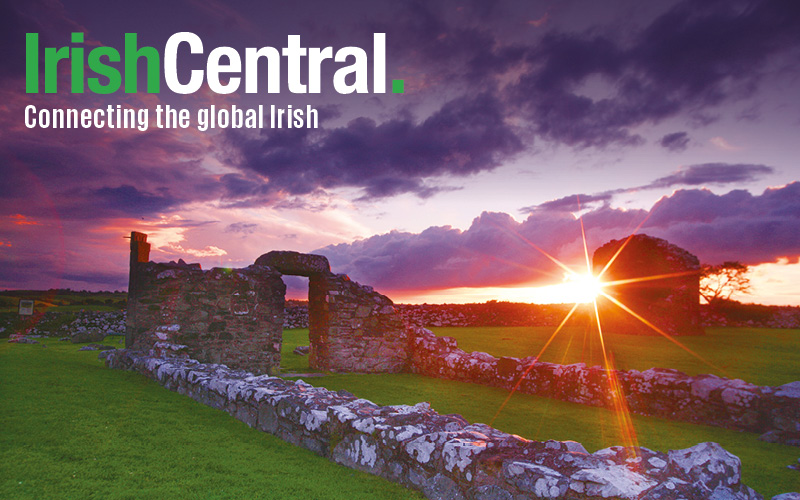Ouririshheritage.org a new open access, contributory website dedicated to the local history of Ireland is an initiative helping to break down barriers between the traditional, ‘remote’ history of the academic, and that of ordinary people. Each has its own intrinsic value but together they offer a more holistic and evocative picture of what real everyday life in Ireland was really like.
Launched in November 2011 by Tommy Graham, Ed. History Ireland, this National Museum of Ireland project is a place where people of all ages and abilities can engage with Irish history and where every contribution is valued equally.
Visitors can browse the website and discover the Ireland of its people and its Diaspora. The information is not limited purely to the distant past and the site has a broad ‘heritage’ remit. You can enter one of our competitions designed to engage people of all ages with Our Irish Heritage and find out about related events at home and abroad.
Getting visitors involved with their history is the aim and during May this year, the website hosted an online project in conjunction with May on Our Doorstep an exhibition celebrating the ‘coming of summer; a tradition going back to Pagan times.
Ancient customs associated with May Eve and May Day might be considered obsolete but some are in fact, still being carried out today. On May Day, flowers can be seen adorning the doorsteps of houses in the old parts of Castlebar, Westport and Newport, three towns local to the Country Life branch of the National Museum of Ireland. The origins of this custom are good luck and protection; yellow flowers in particular were believed to have strong, protective qualities. Wild flowers are collected on May Eve and strewn on the doorstep to keep the faeries (or bad luck) from crossing the threshold. May Eve and Hallowe’en were considered to be the two most dangerous nights of the year; times when faeries are at their most treacherous and ghostly spirits can cross over to the earthly plane causing untold chaos and bad luck. As many of our May customs are associated with flowers, they became the focus for our project.
At the Museum, groups representing people of all ages, abilities and cultures were invited to make handcrafted flowers for the exhibition while online, an appeal was put out for people to contribute their memories of May Days Past. An online survey was conducted to try and capture the variety and distribution of May Customs in the 21st century; May Poles, May Parades, May Altars, May Queens, The May Bush, The May Bough, May Eve fires and butter making to name but a few. A similar distribution map was collated in 1979 by the folklorist Kevin Danaher using information collected between 1937 and 1974 by the Irish Folklore Commission. We would be very interested to hear from anyone in the US who that celebrates May; the customs perhaps having been brought from Ireland many generations ago. The information gathered through this project added significantly to our collective and curatorial knowledge in this area. The survey and memory collection will continue over the next three to five years in order to get as wide a representation as possible.
This intangible heritage - folklore, traditions and customs - is central to the stories that the objects on display in the National Museum of Ireland -Country Life can tell us. Located in County Mayo in the west of Ireland, this museum celebrates the lives of ordinary people living in rural Ireland between 1850 and 1950; you can visit www.museum.ie for more about this museum. If you have your own story to tell, photographs to share, or places to reconnect with, you can register on the website and create your own pages and upload photographs and scans of documents or share your research, perspective and appreciation of Irish heritage and culture. You may wish to post an appeal for information on a specific topic or family history and you can comment on the pages you like. Our team of dedicated editors can’t wait to see what you have in your attic!
Ouririshheritage.org is also the home website for the Irish Community Archive Network (iCAN) a collective of communities that have been working with the Museum for the last four years to collect, preserve and make accessible their local history and heritage online.
Each website is a repository of photographs, documents, research and personal stories. These fascinating collections represent a unique historical narrative that may have been lost forever if not for the dedication and enthusiasm of the volunteers who have collected and scanned thousands of items.
From World War II photographs discovered in an Australian attic (still undeveloped in a Brownie box camera), to grave records , folklore interviews and family photographs that have been unearthed from cupboards and drawers – these grassroots archives give an insight into life in Ireland that you can’t be read in a history book. These communities are writing their own histories, creating a legacy for present and future generations.
Don’t forget – it’s Our Irish Heritage - claim it, share it and enjoy it. We hope that people all over the world with Irish connections will participate and upload their photographs, letters and documents to help these archives grow.
Visit: www.ouririshheritage.org ; Oughterard, Co Galway www.oughterardheritage.org ; Ballinrobe, Co Mayo www.historicalballinrobe.com; Louisburgh & Killeen, Co Mayo www.louisburgh-killeenheritage.org; Coming in 2013 a County Wicklow community archive.
For more information contact Lorna Elms, National Museum of Ireland – Country Life at [email protected].




Comments